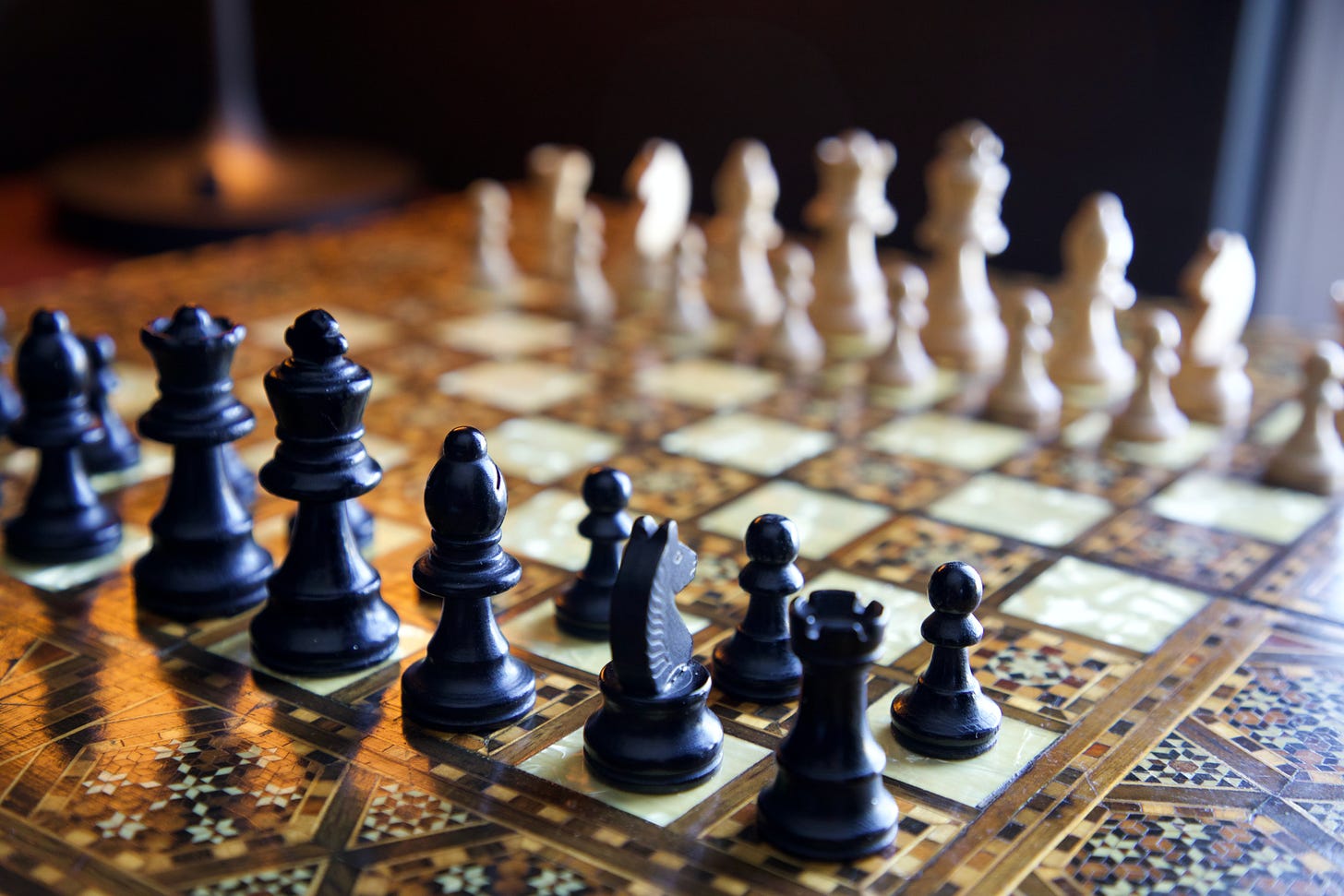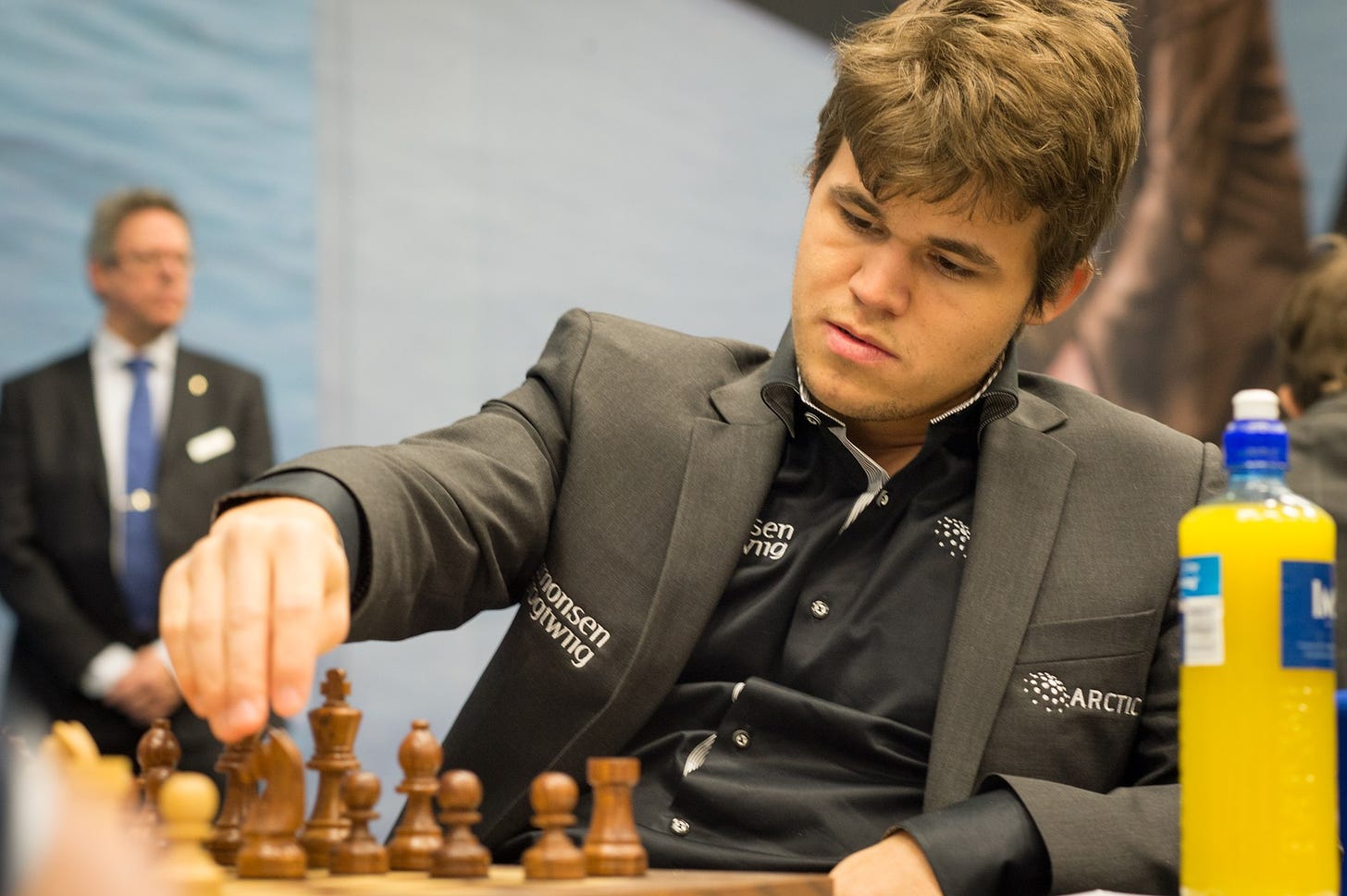
I was in my school’s chess club for a couple of years. We played against other students in the area, but during these competitions I only remember seeing one girl. Eventually, I quit playing chess and started playing guitar. I switched for the music, but it helped that guitarists were cool. If you had asked me to describe the appearance of a top-rated chess player, I would have said a man with binoculars-thick specks, urine-coloured fingers, hackled neck, moulting jacket – “some wronged and fettered wild beast or bird, dangerous to approach in his sullen woe.”
During one of Sydney’s lockdowns, when the pubs were closed, I got back into chess. Many other people did, too – or started learning it for the first time – because of a TV show called The Queen’s Gambit. I hadn’t seen it, but I was pleasantly surprised by its existence. I was positively gobsmacked when I learned that the reigning world champion, the perfectly named Magnus Carlsen, looks like this:

Trawling the internet, I found chess videos on YouTube and TikTok with millions of views. Online, there are women who look like supermodels and play like grandmasters. When did this happen? How did chess get so popular? It can’t only be The Queen’s Gambit – the series finished in 2020, and more people are playing chess online in 2023 than ever before, so much so that in January the servers for chess.com crashed repeatedly. (They’re still crashing fairly often.) With access to an infinite storehouse of music, movies, video games, and pornography, people are watching and playing chess?
It has some advantages as a spectator sport: you can see the whole board at once, though whether you’re paying attention to everything is a different question. The words are a bigger obstacle. Chess commentary might be one of the most arcane languages on earth:
“Caro-Kann”
“Fantasy”
“What’s the line again?”
“F3”
“Fork!”
“Are we winning?”
“He hung his bishop” (Gasps)
“Long castle”
“The knight isn’t developed”
“What a terrible move”
“And this guy’s a 1600?” (Sniggers)
“En passant”
“Checkmate”
“Beautiful”
And people everywhere are lapping it up.
I’ve heard that YouTube and other video sites are promoting chess content because it’s good, wholesome entertainment for the whole family. They are wrong. Chess is a violent contact sport; any footage of it should be classified alongside Tarantino movies and those nature documentaries showing a lion hunting, killing, and eating a zebra. Unlike in most contact sports, in chess you spend agonising minutes after your move, sweating and hoping and praying your opponent doesn’t hit you where it hurts. Then he does, and the wounds never heal. I still remember a rook taken from me when I was ten.
I like playing online because that way my opponent can’t hear me yelling after my own bad moves:
“DAMMIT”
“Why did I do that?” (Groan)
“I forgot about the bishop”
“WHAT IS THAT?”
And maybe this is partly why chess has become so popular. It offers a life lesson: most of the time, your main antagonist is yourself.
Good players don’t play like I do; they don’t make a few confident opening moves and then frantically try to put out fires that have started all over the board. They understand what they’re doing. At least, they do until they play against someone better, and those better players themselves furrow their brows against Magnus Carlsen. This might be why the popularity of chess on YouTube is so surprising: it seems antithetical to the game – it can’t be broken down into digestible pieces without extreme simplification. The greatest minds and supercomputers in the world don’t fully understand it, and they never will. There’s an astronomical shadow surrounding the board. But there’s a religious idea here: the people which sit in darkness see a great light. Chess is an apophatic joy.




I read some wag's reason for why he doesn't play chess:
There's 2,000 years of play which people smarter than me have studied for years. I make a move and they say "Ah, you're attempting the French cumsock defence - a novice mistake. You'll be checkmate in 27 moves."